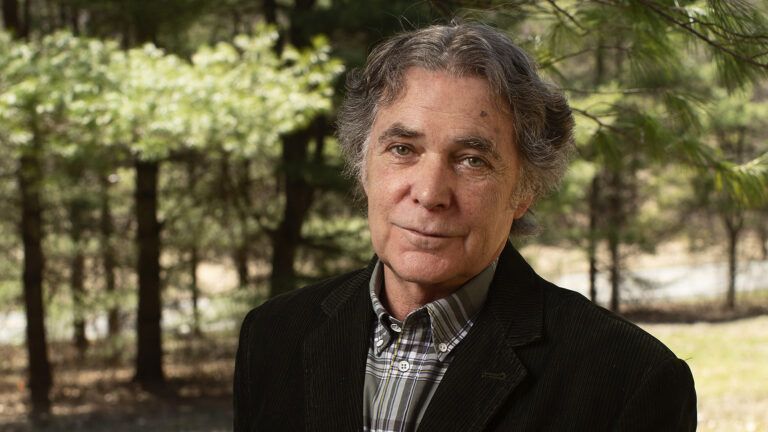Four of us were in a taxi headed for a restaurant in San Francisco’s Chinatown when the crash occurred. It’s the last thing I remember about that September day 19 months ago.
When I came to in a hospital bed, my daughter Heller and my son Larry were looking down at me anxiously. I was trying to ask them, “What happened? Where are my friends?” But I couldn’t. The pain was too great.
Only later did I learn that a van had smashed broadside into our cab and that my friend and close business associate, Ben Washer, had been killed instantly. Janet Gaynor, my dearest friend, caught the impact of both my body and Ben’s and was smashed-up inside and fighting for her life.
Her husband, Paul Gregory, had a serious whiplash, broken ribs and a bruised kidney. The driver of the van was charged with running a red light, drunken driving and manslaughter.
GET A FREE GUIDE TO UNDERSTANDING MEDICARE
I had a pelvis broken in three places, a punctured lung, fractured ribs and pain—from head to toe. At the age of 68 I wondered if life had not dealt me a bitter final blow. Would I ever be able to walk again? Was my career over—again?
How ironic it seemed. Up until the moment of the accident, my life had begun to brighten once more. For a long time after the death of my husband, Richard Halliday, in March 1973, I had been in a dark night of grief.
We had been married for 34 years; in my despair I left work: my singing voice gave out completely. But slowly, through the help of my family, and friends like Janet Gaynor—yes, Janet especially—I found my way out of that darkness.
My new home, too, had played a part in my recovery. On a visit to San Francisco I fell in love with that city all over again and made up my mind that I wanted to live there. “That’s not very practical,” Ben Washer had said. “You already have two homes? But I said a little prayer anyway, that if it was all right with the Lord, I’d really like to be in San Francisco.
A few days later I was asked to join Jim Hartz as co-host of a TV program. And from what city was that show being telecast? San Francisco.
“Thank You, Lord,” I said, “but I really didn’t mean to press You all that quickly.”
’Now, a year later, lying in a hospital bed, I was thinking about that show. Called Over Easy, it was designed to interest and help older people—people over 40. We were supposed to tell our audience how to get more out of living in their later years. Talk about irony! Here I was, approaching 70, in pain, wondering if life held anything more for me. So what help could I bring to a television audience now? It all seemed so bleak.
Or was it? The more I thought about it, the less bleak it became. I did have something to say. And I learned it in that hospital bed.
My cue came from Janet, who was somewhere in the same hospital. Over and over I asked people how she was doing. “She’s fighting for her life,” they’d tell me. Another time I’d hear, “That little gal has great courage. If she keeps on fighting that way, she’ll make it.”
READ MORE: MARY MARTIN ON HEALING SOLITUDE
Fighting, that’s what Janet was doing, fighting hard to live. And why? Because every spark of life that God has breathed into us is precious. Janet knew that; so did I.
Now I wanted to do some fighting of my own, and the first thing I had to do was to take on my most immediate adversary: pain. In the next days, the pain didn’t go away, but I came to terms with it. I even turned it into a kind of blessing. When you feel pain, you know that you’re alive; and where there’s life, there’s hope; and where there’s hope, you can start doing something with your life!
“I’ve got to get out of this bed,” was the next thing I told myself. “I’ve got to get out of this bed and go see Janet.”
I started by raising myself to a sitting position in bed. It took a while before I could get to the point that they would let me put my feet on the floor. And then I was unable to straighten up. I was given a walker and taught how to push it ahead of me, then shuffle my feet after it.
It took a week to learn how to push my way six inches at a time, but little by little—push, shuffle; push, shuffle—I began to get somewhere. And then one day I shuffled all the way to Janet’s room!
The moment Janet saw me, her face broke into a big, broad smile. She had 11 broken ribs, a broken collarbone, a ruptured bladder, a bleeding kidney. And she was smiling. I shook my head in sheer wonder.
“No matter how battered,” Janet said, still smiling, “it’s amazing what the human body is capable of.”
“You can say that again!” I said, breaking into a big, broad smile of my own.
Every chance I got, I hobbled my way to Janet’s room. When I managed to push the walker 12 inches at a time, I asked the doctor, “How long will I have to use this thing?”
“Twelve weeks or so,” he said.
“Twelve weeks!” I shot back. “No way!”
Alter several weeks in the hospital. I was allowed to go home. I made the 15 feet from the exit to a waiting car with the walker, but this time I was straightened up. Just as I reached the car door, I heard a lot of noise behind me. I turned to see doctors, nurses, aides leaning out the windows, cheering and applauding—and crowing, “We believe.”
It made me glow.
My home is one of those wonderful San Francisco houses on one of those wonderful San Francisco hills. When I arrived there with my nurse Bee Kilgore, I had to figure out how to climb four flights of stairs to my bedroom. I did it by sitting down backward on the first step with the walker in front of me, and sliding up backward, one stair at a time, resting at each landing, then resuming the backward slide upward.
The next day I was eager to get outside. But how to get down those four flights of stairs? “Don’t!” Bee Kilgore ordered. “You’re sure to fall down.”
“Well, how did I get up here? Sliding up backward one stair at a time. I can slide down forward one stair at a time.” And so I did.
About a week later I left the hospital I went back to work on Over Easy I was wearing a brace and pushing my walker as the cameras followed me onto the set and to my seat. After the show. Jules Power, the producer, hurried over to me. “Mary,” he said, “you don’t have to be on camera going through all that struggle with the walker. We can start the cameras going after you get to your seat.”
READ MORE: JOAN FONTAINE ON FINDING A HOME
“Oh, no,” I said quickly. “What’s this show all about anyway? I want people to see how us old folks can get where we’re going no matter what we have to do to get there.”
In time, with Bee at my side, I took my first walk without the walker. And it was six, not 12, weeks after the accident!
One day, I even walked a whole block. Only then did it hit me. “Hey, you’ll have to walk back,” I said to myself. “That means another block.” But I made it. And one day I was able to tell Bee, “Please, don’t come with me.” I walked alone. Five blocks. Pretty soon I was walking a mile.
It still hurts when I overdo. So I wear a sacroiliac belt. But the difficulties don’t stop me. Every morning I’m up at 5:30, and, after prayers, I take a walk or swim and then go to work. I’ll never stop working. When I can, and I try to be with them often, I’m enjoying my children, my grandchildren and my friends.
In May last year I made a special trip to New York to see a special friend, Ethel Merman, who had been operated on for a brain tumor. I never thought I’d ever see her flat out on her back. To me, Merman, then in her mid-70s, was like the Statue of Liberty. Indestructible.
But there she was in a hospital bed, unable to walk or talk. I wasn’t even sure she could hear me. I sat there holding her hand, trying to tell her with my eyes that I was praying for her, willing her strength.
READ MORE: MARGE CHAMPION ON FORGIVENESS
“Look at me, Merman,” I finally said aloud. “Promise me you will get up out of this bed and walk and talk again.”
The garbled sounds that came from her were saying, I will. I promise. I will.
When I got back to San Francisco there was a letter from her son Bob. “Mother is home!” The words rang happily from the page. “Home!” Shortly after that I picked up the ringing phone and there on the other end of the line was Merman. She was always a fighter!
I doubt that there is anybody, really, who doesn’t know that all life is a fight, and that sometimes life itself is what we have to fight for. I’ve never forgotten something that one of our San Francisco columnists, Charles McCabe, once wrote: “The only real sin in the world is not to fight, not to realize the fullness of your own nature.”
I think that’s what the Lord means when He tells us in Deuteronomy (30:19), “…I have set before you life and death, blessing and cursing; therefore choose life…”
After six operations and 10 months in and out of hospitals (mostly in), Janet Gaynor is walking and talking. She still has a long way to go. “But I have come a long, long way,” she says.
We both have. We know that nothing is ever going to be quite the same with our bodies. We were in a terrible accident. We’re getting older. The only thing to do is accept that, move on, and try to help other people. Indeed, whenever I see older people who say, “It’s all over. I’m finished,” I want to shout at them: Don’t ever settle for that. Your body is tougher than you think—and your spirit is invincible. Choose life! Fight back!
Did you enjoy this story? Subscribe to Guideposts magazine.






